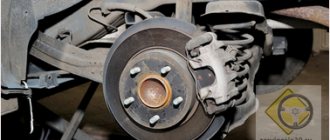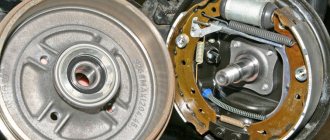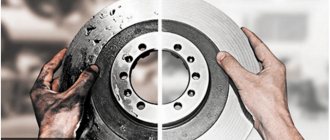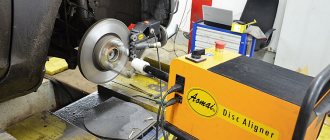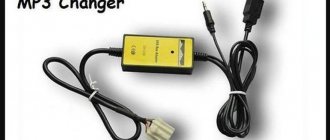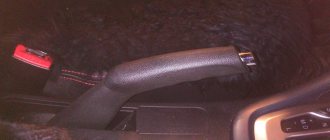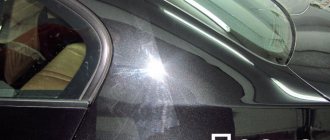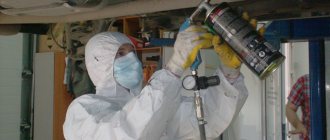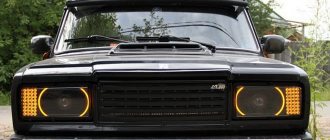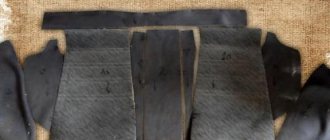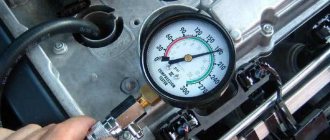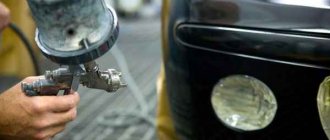Main function
They are also called “balancing” (absorbing vibrations). Their main purpose is to remove distortions, as well as to evenly transmit braking force from the caliper piston over the entire surface of the brake element.
After all, dust and dirt (sometimes moisture) often gets on the caliper guides, this contributes to the misalignment of the pad (even if not significant). This is one of the reasons for squeaking, and it is these linings that fight this disease.
However, if the piston and guides are clean, the brake pad and disc itself may resonate during braking. To change their frequency and prevent sound from passing further, these plates are used, often using a special lubricant.
Why do you need anti-squeak plates for brake pads?
As noted above, installing such plates allows you to eliminate the creaking sound when braking the car. This is achieved by absorbing the resulting vibrations by the plates. By installing the plates on the brake pads, it is possible to eliminate distortions and smoothly transmit the braking force when the brake pedal is applied from the caliper piston over the entire surface of the element.
As you know, misalignment of the pads occurs on almost all cars during operation. Its appearance depends on how actively sand, moisture and other elements get onto the caliper guides. Because of the misalignment, creaking occurs, and the plates in question counteract it.
Another problem that anti-squeak plates solve is the resonance of the brake pad and disc during braking. As you know, during the braking process the disc and the friction layer adhere unevenly to each other, especially if the surfaces have been in use for a long time and are worn out. Due to a loose fit, vibrations occur, which a person hears as a squeak. Accordingly, in order to get rid of vibration and squeaking, you need to act on the friction layer. The plates (most often together with a special lubricant) allow you to change the frequency and prevent the passage of sound.
Please note: Regarding the lubricant that is used in conjunction with the anti-squeak plates. It is better to use special refractory synthetic lubricants for the brake system. Once hardened, they form a rubber-like layer that prevents vibrations and sounds.
What is it made of?
The material used is the most common and simple. These are thin pieces of metal (usually steel or tin) cut along the contour of the block. As you guessed, they are used from the non-working - outer side (that is, not from the friction side), they rest against the piston or mating part.
Some manufacturers do not install them at all, others put one piece in the kit, others two + special lubricant.
There can also be global differences in shape - sometimes it is a regular flat plane (usually adjacent to the piston itself). But it happens that it is done with slots (used on the reverse side). As I said above, the kit can come with both at once, that is, both flat and corrugated.
What are anti-squeak plates made of?
Anti-squeak plates are a thin piece of metal cut to the shape of a brake pad. Most often, metal is used to create plates - stainless steel or tin.
Anti-squeak plates are installed on the brake pad from the reverse side, that is, not from the friction side. Thus, the plates directly rest against the piston or mating part.
Please note: Many major brake pad manufacturers install anti-squeak plates on the part initially. Some of them include anti-squeak plates in the kit or even more than one piece (2.3, as well as lubricant), so that the car owner himself can decide whether to install the plate.
It is worth noting that the anti-squeak plates are cut to the shape of the pad, but they may differ from each other. There are plates with slots that are installed on the reverse side. If the plane of the plate is flat without cuts and the area coincides with the block, it is installed directly to the piston.
Are they needed at all?
Actually, the truth is in the middle, it happens - that even without such overlays no sound occurs! It’s just that the material itself is moderately soft and time-tested (the manufacturer has developed a specific formula). However, there is still no protection against contamination and misalignment of the pad or even resonance.
This is where our plates come in, they fight against all negative phenomena that may be caused by circumstances beyond the control of the manufacturer. It’s commonplace that the guides are rusty or oxidized.
Although to be fair, THESE ANTI-CRACK LININGS DO NOT ALWAYS WORK! Many people write that they don’t help! Or one doesn’t help, you need at least two of them on both sides + apply a special lubricant.
I will say this - if you bought “crappy” cheap pad options, then anti-squeak elements will not help you! If your piston or caliper guides are covered, and it simply jams, THEN THEY WILL NOT HELP YOU!
They work GREAT on normal brakes when there is minor blockage and resonance. YOU NEED TO UNDERSTAND THIS! This is not a universal pill for all diseases.
About resonance and lubrication
I know that now many people will start writing - I would like to hear more about the resonance of the disk and the friction lining itself. Actually, it’s no secret to anyone that when braking, the friction layer does not adhere evenly to the surface of the disc (this happens especially often when the surface is already fairly worn out). More precisely, it can vibrate and produce high-frequency sounds, which our ear picks up in the form of a creaking sound.
To get rid of it, we need to change the frequency of these sounds, that is, either change something specifically with the friction (soft) layer - sometimes it is sawed through in the middle or ground off along the edges.
BUT EXACTLY FOR COMBATING RESONANCE - anti-squeak elements are very effective, especially if you apply lubricant to the outer surface of the pad and press it with a plate. It turns out to be an improvised pie
A few words about lubricants, they use special, refractory, hardening ones (I won’t advertise the company, that’s not the point). They form a kind of rubberized layer on the outside that dampens all vibrations, including sound ones.
If you exaggerate it too much, try throwing a stone into a metal bathtub, you will have a bell effect. Now line the bottom with rubber mats and throw it again - there will be no such noise anymore. Anti-squeak plates also work.
Anti-squeak plates for brake pads. What are they for and can you do it yourself?
In the summer heat or even in winter, we may encounter squeaking front brakes from prolonged braking. Wildly annoying! Imagine you have any executive car (maybe a lower class) and you stop at a traffic light, and the creaking is so loud that it’s as if the UAZ has stopped. There are a lot of reasons for this, but recently special plates have appeared that are very helpful in this problem...
THE CONTENT OF THE ARTICLE
They are called “anti-creaking” or “anti-creaking”, call them what you want. However, the point remains that they prevent the brake elements and disc from making “wild” sounds when braking. Say it is not entirely clear, but if you dig into it everything becomes quite simple.
Is it possible to do it yourself?
I’ll start with this before I run for a piece of metal and cut it out with my own hands. Look at them on sale, it happens that some manufacturers sell universal anti-squeak plates separately (if I’m not mistaken, NISSAN even sells original ones separately). Moreover, they are not so expensive and are often suitable for various companies. One more thing - take two at once (on both sides), so that later you don’t have to run around and look for another one.
Now for those who want to do it themselves. There is nothing complicated, remember - the shape should follow the contours of the braking element, not go beyond its edges, otherwise it will interfere with braking.
Which metal to choose, some use ordinary steel, 1 mm thick, but the big disadvantage is that it will rot very quickly from moisture and salt on the roads. Therefore, I advise you to take either stainless steel or a piece of tin, the same thickness of 1 mm is possible, more than 2 mm is not recommended, it will be thick - we don’t need it.
You take a pencil, put it on the sheet from which you will make it, trace the block - take metal scissors and cut it out - EVERYTHING! Just like that, easy and simple.
Now let's watch the video version of the article
This is where I end, I think my article was useful to you, sincerely yours, AUTOBLOGGER
(
8 votes, average: 4.50 out of 5)
Similar news
Why do brake pads squeak when braking? Just like the old ones.
Grooving brake discs. Without removal, or with your own hands. A Art.
How and with what to paint the calipers. We select the optimal paint and color.
When replacing brake pads, car owners often encounter thin metal linings included in the kit. Many people don’t even pay attention to them, considering them an extra spare part. The name of this part is anti-squeak brake pads. Do they really stop squeaking? And if not, then what are they for?
Anti-squeak plates: why they are needed and how to make them yourself
The process of braking a car is quite complex in terms of the impact on the elements of the braking system. When braking, parts rub against each other, heat is generated, and if the brakes are not in perfect condition, squeaking may occur. At the same time, the problem with the occurrence of squeaking during braking of the car is relevant not only for budget models, but also for luxury cars. To avoid squeaking when braking, car component manufacturers have launched anti-squeak plates for brake pads on the market. When they are installed, brake discs and pads stop squeaking when the car is braking. Let's take a closer look at how anti-squeak plates work and how you can make them yourself.
Description and purpose
Anti-creaking plates are also called balancing plates. Their main role is to redistribute the force from the brake piston over the entire surface of the pad. If dust or dirt gets in and there are no such plates, a slight misalignment of the pad may occur. This almost always causes an unpleasant sound from the brakes. That is why the plates are called anti-squeak plates.
Externally, they consist of two parts and are made of thin metal (tin). The plates follow the contours of the brake pad, and they are located on its non-working side, closer to the piston. The part that comes into direct contact with the brake piston looks like a solid plate. The other one, which is adjacent to the block, is corrugated. This is just necessary to be able to evenly distribute the force in the presence of contamination.
Design Features
The appearance of anti-squeak plates is often misleading. Subtle and frivolous, they are often not taken into account and not installed. This attitude is also facilitated by the fact that non-original sets do not include records. And if the car owner has a car with pads that have already been replaced once with non-original ones, then even more so.
In fact, the pads may not creak without such plates. This is due to the good operating conditions of the car and timely maintenance. That is, with proper technical care, when all brake mechanisms are regularly carefully rebuilt and lubricated.
Anti-squeak plates for rear brake pads are originally available only on cars with rear disc brakes.
Squeak or anti-squeak plates?
Brake pad replacement kits for disc brakes sometimes contain so-called squealers. They should not be confused. The anti-squeak plates of the brake pads follow the shape of the lining, and the squeak is a small, intricately curved tin. It is usually installed perpendicular to the long axis of the block by riveting or snapping.
The purpose of such a plate is completely different - on the contrary, it creaks when the pad is close to abrasion, hence its name. Essentially, this is a cheap version of a brake pad wear sensor. It is made of soft metal and does not tolerate distortion and deformation of brake discs.
“Squeaks” are much more common in brake replacement kits. They are also produced by companies that supply non-original products.
The cause of brake disc squeaks is due to overheating
Sometimes the cause of squeaking when braking is overheating of the brake disc itself.
There are two types of brake discs: drum and disc. The second option appeared recently, but has already gained popularity. The braking coefficient of a disc disc is much higher than that of a drum disc. In drum discs, braking is much worse, and wear at high speeds is higher. But the price of such pads varies greatly. Disc brakes are also expensive, but their quality is much higher.
The issue of brake pads squeaking when braking is more relevant than ever - after all, this is the safety of your car on the road, you personally, and other road users. Do not neglect the issue of replacing the brakes when the brake pads squeak. We advise you to choose good, high-quality, compatible pads with discs so that they serve you for a long time!
Plate Lubricant
The original brake pad replacement kit always contains a small bag of lubricant. Often they simply lubricate the guides. It turns out that this special lubricant is for the anti-squeak plates to work. After all, without this, they will simply behave like a couple of tins and cause terrible noise. It is thanks to the lubricant that is applied to the corrugated plate that the remarkable effect of uniform, silent pressing of the pad occurs.
What to do if there is no lubricant, how to lubricate the anti-squeak plates of the brake pads? This can happen when replacing a non-original set when the records remain unworn. Lubricant for adjusting plates has special properties. Firstly, it must be high-temperature, since when the brakes are used intensively, one disc can heat up over 500°C. Secondly, the synthetic base and the lack of impact on rubber products - guide anthers - are important. Among well-known companies producing lubricants, Liqui Moly is widely known.
What is brake lubricant used for?
The results of applying brake lubricant depend on the area where it is applied. Coating the guides in the wells of the caliper brackets leads to increased smoothness, reduced wear, and a reduced risk of jamming and scuffing.
There are means to help eliminate high-frequency squeaks. They help reduce extraneous noise during braking. Anti-squeak pastes also protect against corrosion.
To facilitate disassembly, anti-stick compounds are used. They have a copper or nickel base and have anti-creaking properties.
Lubricating the seating surfaces makes caliper assembly easier. At the same time, the use of special means to simplify the installation of pistons in cylinders helps reduce the risk of corrosion.
Or maybe with your own hands?
It happens that it is not possible to order an original set of brake pads. At the same time, the original plates also became unusable due to creaking. In this case, there are only three options to get out of the situation:
- Leave everything as is and do not drive the car so that the brake discs do not wear out.
- Change the set without plates and just carefully monitor the condition of the brakes.
- Be smart and make anti-squeak brake pad plates with your own hands.
What might this require? Yes, just a sheet of tin of the same thickness. Having attached the old anti-squeak plate to it, we carefully trace its outline with a pencil. Then, using metal scissors, we cut out the plate as accurately as possible. After this, combining the old and new part and pressing them together using clamps or a vice, we bring it with a file until it matches completely.
Both anti-squeak plates are made in a similar way. The corrugated inner plate will require more time and patience, but it will also give in to perseverance and work. All that remains is to choose the right lubricant - that’s all. Now the skew of the pad or its central deformation in the place where the piston presses is not dangerous.
Is it possible to make anti-squeak plates with your own hands?
Essentially, the anti-squeak plate is a piece of metal cut to shape. Accordingly, there is nothing difficult to make such a plate yourself. If you decide to make the plate yourself, it is important to choose the right metal. The best option would be stainless steel or tin (thickness about 1-2 mm). If you choose ordinary steel, then due to exposure to the environment during operation, it will quickly rot.
Important: When cutting out the anti-squeak plate, remember that its shape must exactly match the shape of the pad. If the plate has a larger area than the pad, its protruding parts will interfere with the car's braking.
Please note that some manufacturers offer to buy anti-squeak plates of universal sizes separately from the pads.
How hard is it to find anti-squeak plates?
How rare are kits that include anti-squeak brake pads? Where do questions about making plates with your own hands come from? In fact, there is no hype. The plates are always included in the original brake pad replacement kits for disc brakes. Almost all Japanese foreign cars are equipped with such kits. At the same time, the price of the sets in the original packaging is significantly higher than any analogue. Separately, anti-squeak plates are sometimes more difficult to find.
Again, as for Japanese cars, the original catalogs have all the information. There it is easy to find separately the number of the part being described. Anti-squeak plates for Toyota brake pads, for example, are sold and ordered separately.
Among companies producing non-original products, TRW stands out well. This company's range of pad sets includes complete copies of the originals, which necessarily contain anti-squeak plates.
Nissan anti-squeak plates
Japanese cars are a high-tech product. Anti-squeak plates have long been installed on many cars of Japanese origin. In order not to be unfounded, consider as an example the Nissan Teana, produced in 2006.
By entering all the necessary data, which is the Vin number or body number for a right-hand drive car, we get full access to the car’s spare parts.
Having followed the “brake system” branch, we find the front pads without much difficulty. There is also a catalog number for the pads themselves - AY040NS106, which by entering it into any online store, we will get the price and delivery time for spare parts, as well as the price and delivery time for non-originals.
Anti-squeak plates for Nissan Teana brake pads also have their own separate catalog number - 41080AU025. This kit includes all plates for replacing pads: two anti-squeak plates and one squeak plate for each wheel.
Do I need to use anti-squeak plates?
As mentioned above, the plates are primarily aimed at eliminating unpleasant sound when braking a car. The plates do not particularly affect the braking efficiency. From this we can conclude that if your car does not make an unpleasant squeak when braking, there is no point in installing the plates in question.
Article on the topic: Causes of cracking
But it is important to understand that squeaking may not appear immediately after the start of using new pads, but, for example, after 5-10 thousand kilometers due to exposure to the external environment, which will result in rusting and oxidation of the guides. In such a situation, you can install plates to get rid of distortion and unpleasant sound.
It is worth noting: You can read reviews online that anti-squeak plates do not work. Indeed, they are not always effective, and sometimes their effectiveness is not noticeable due to improper installation. For example, in some cases it is necessary to install two anti-squeak plates on both sides in order to feel the effect of them, and also apply lubricant.
User reviews
Anti-squeak brake pads are still a very controversial issue on automotive forums. Among the arguments for and against, the main criteria remain observations after the installation of plates and without them. So, some forum users notice the lack of changes. That is, the pads creaked and continue to creak. And opponents argue that in this case there are installation inaccuracies and defects not related to the plates.
Some Internet users note the possibility of using non-original brake pads without anti-squeak plates. At the same time, no noise occurs during operation. Based on the above, only the manufacturer can recommend something, and you will have to resolve the installation issue yourself.
Why does the creak appear?
All elements of the brake system wear unevenly. Everyone knows that pads, as a rule, wear out faster on one edge; brake discs also tend to wear out in fragments. In some cases, the caliper pistons become sour and they press the pad unevenly against the disc.
In any of these cases, a small gap appears between the disc and the pad. But this is not the main reason. The fact is that when moving, the wheel deviates slightly from the axis. Moreover, this happens with a certain frequency, as soon as there is a loose fit between the pad and the disc, a resonance occurs, which leads to the appearance of sound. To remove sound, resonance must be eliminated.
The time comes for every motorcyclist to change the brake pads on their motorcycle. From this moment a lot of questions begin =) Which ones to take, price, etc. In stores, especially online, there is now a large selection of pads, both by type and manufacturer. Buying the most expensive ones is not entirely correct, since you can buy the wrong type of pads for your motorcycle. I think all owners of “iron horses” know why there are brakes on a motorcycle.
From a physics point of view: they convert the kinetic energy of a moving motorcycle into thermal energy through the friction of the pads on the brake discs. It follows that an effective braking system must not only have a good coefficient of friction, but also withstand high operating temperatures and also be well cooled. Harsh reality dictates one more condition: the brakes must be well controlled and predictable in all ranges of their use - a light touch of the brake lever should lead to light braking not only when you want to slow down a little, but also in the case of a long descent from a mountain pass to brakes
The pads are divided into several types according to their manufacture, as it were. In ascending order - organic, low-metallic, semi-metallic, ceramic and Kevlar.
Organic Brake Pads Organic brake pads are made from graphite, phenolic polymers and other materials that increase friction. This type of pads is practically silent, and in no way harms human health, since it has a safe composition. Such pads are gentle on brake discs, but their soft structure is not designed for long-term operation at high temperatures
Low-metal Low-metal brake pads are essentially the same organics, but with the addition of a small amount (no more than 30%) of steel or copper. Thus, due to metal additives, braking and heat transfer are improved, but at the same time the noise level and the amount of dust generated increase. They are less durable than semi-metallic ones.
Semi-metallic Semi-metallic pads are made half of metal, represented by cut steel wire, powdered iron, graphite or copper and other inorganic substances. Manufacturers also include a friction modifier in the composition, which ensures a connection between the ingredients. The pads are durable and have excellent heat dissipation. The disadvantage is rapid wear and high noise levels in the form of squeaking. They also do not perform well at low temperatures. Also, steel, despite its durability, entails rapid wear of the brake disc.
Ceramic Ceramic brake pads are considered the most optimal solution today, but due to the price, they are not so often in demand among motorcyclists. Ceramics are produced using the following technology: under pressure, metal shavings are mixed with ceramics in a certain proportion. The mixture is then baked at high temperature. The result is ceramic pads that have high temperature resistance and other useful properties. The advantage over its counterparts in virtually everything is the reduction of vibration and noise; ensuring constant friction coefficients in different temperature ranges; more careful attitude of pads to discs due to the replacement of iron-containing alloys with copper ones. They also provide excellent braking and do not lead to disc wear. They are able to withstand high temperatures.
Kevlar The pinnacle of block construction) are Kevlar blocks. They contain a friction mixture with the notorious Kevlar. The property of which makes it possible not only to be bulletproof)), but also to effectively brake “on cold”, i.e. without warming up the pads. This is the main difference from ceramic pads. Kevlar retains its properties at low temperatures down to -190 degrees) When heated to very high temperatures, Kevlar does not melt, but decomposes. Therefore, these pads are leaders in auto-moto sports.
Now let's look at the general questions. Temperature conditions and information content. Each brake pad has a specific temperature range within which they brake most effectively. For example, you shouldn't ride around town with racing brake pads because they need to be heated first to reach operating temperature. Good brake pads contain a mixture of different materials to perform over the entire temperature range during braking. If a material does not work effectively at one temperature, then another one designed for that temperature works instead. Thus, the information content of such pads is the best, since any pressing of the brake lever will be accompanied by the expected braking, regardless of the temperature of the pads. That's all, actually =) We've figured out the types of pads. Draw your own conclusions and buy what you need. From here
Plates
To eliminate this phenomenon, special plates are used. They allow the pad to be pressed against the disc most evenly, which eliminates the cause of the sound. It is placed between the piston pusher and the block; this solution is the most optimal from the point of view of the operation of the entire system.
Please note that this method will not help with some types of disc wear. In particular, this will have no effect if the discs are worn in the form of grooves. With such damage, tight pressing of the disk cannot be achieved.
What are they made of?
Let's see what anti-squeak plates are made of. When choosing a material, you look at several things. First of all, they must be durable, because the pressure from the caliper is quite high. Also, these elements should not have any problems with corrosion, because water and reagents constantly get on the wheels, so the risk of rust is quite high. As a result, not all materials are suitable for this purpose.
The best options for creating these plates are stainless steel and galvanized steel. But the last option is much worse. Galvanized steel is just not that strong. She also has a problem with peeling off the protective layer. Therefore, stainless steel is the best option. In some cases, non-ferrous metals, such as bronze, are used. But, it has a number of disadvantages. In particular, it is less dense, which negatively affects the efficiency of the part. In addition, bronze is a fairly expensive material, and it is not always rational to use it for consumable components.
Purchase
Now you can find ready-made versions of such plates on sale, and the manufacturers of this part may be different. For example, Honda offers both universal plates that are suitable for any model, and original ones that are suitable for a specific modification. Some other brands have repairs. sets of records that are designed for several models that are created on the same base.
If you find plates in a store, be sure to check what cars they are intended for. It is better to buy cars created for your model, but you can also purchase universal options. Always use these parts on all wheels at once.
Pay attention to the material from which this part is made; it is best to buy stainless steel plates, they will last much longer. You should not buy Chinese parts; these spare parts are often of very low quality, which will lead to the need to quickly replace them. As a rule, you won’t find such components in regular stores, so the best way is to order anti-squeak plates online.
How to do it yourself?
Now let's move on to the most interesting part - making records yourself. The reason for such amateur activity may be a banal lack of parts on sale or an unwillingness to pay for a simple piece of iron. Moreover, it is not difficult to make such a record; all you need is a simple set of tools in the workshop, and basic skills in working with metal.
Work is carried out in the following order
:
- Remove the brake pads from the car;
- The next step will be the selection of iron; stainless steel with a thickness of 1–2 mm is optimal;
- We apply the block with its base to the sheet, and mark it, tracing it along the edge of the part. Be sure to mark several “ears” for fastening;
- Using a grinder, cut out the part along the marked contour;
- We apply a special lubricant to the plate, it is sold in stores;
- We attach the block to the received spare part and bend the “ears”.
- The work is now complete, you can put the block and plate in place.
Conclusion
. Screeching brakes are an unpleasant phenomenon. But knowing how to make anti-squeak brake pads yourself will quickly fix the problem. At the same time, save your money, because original components will be quite expensive.
